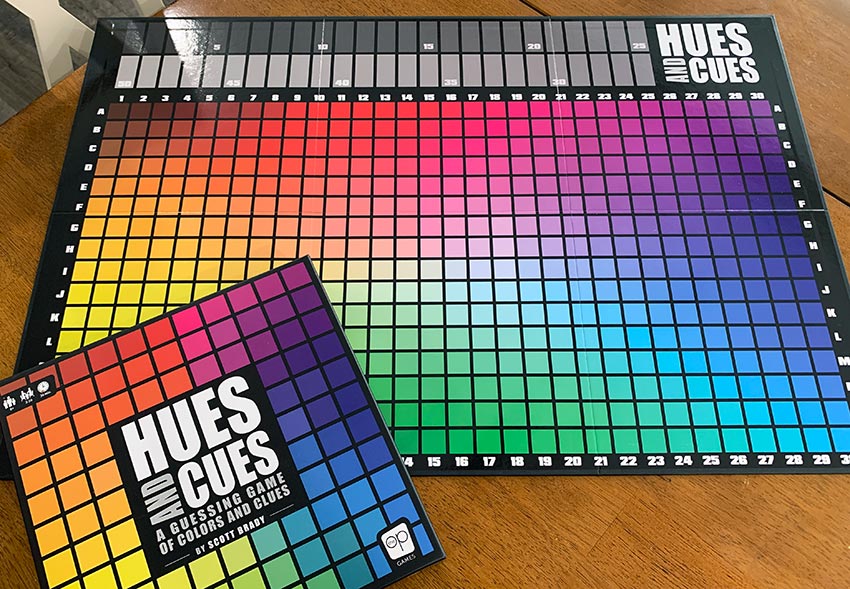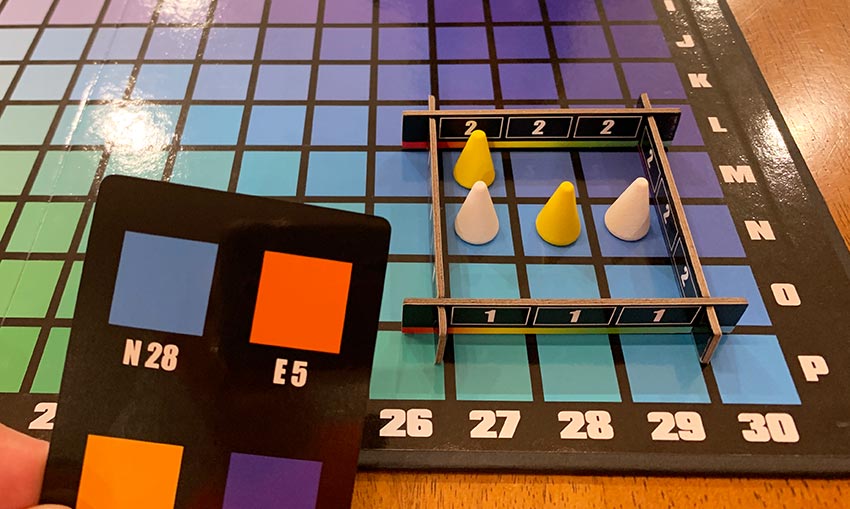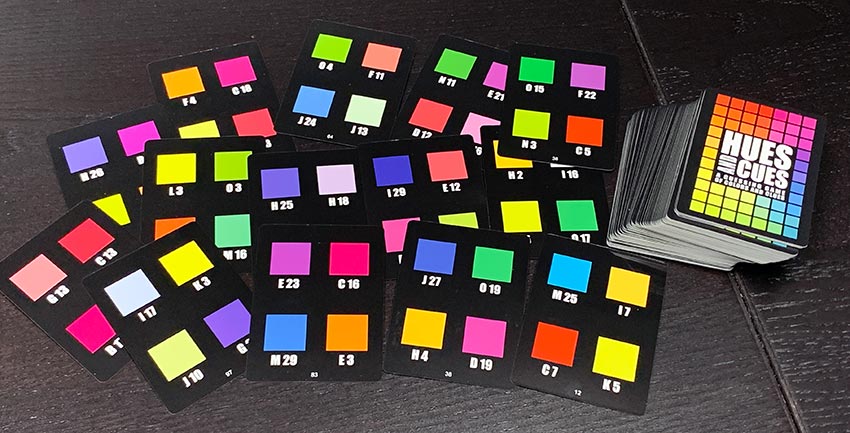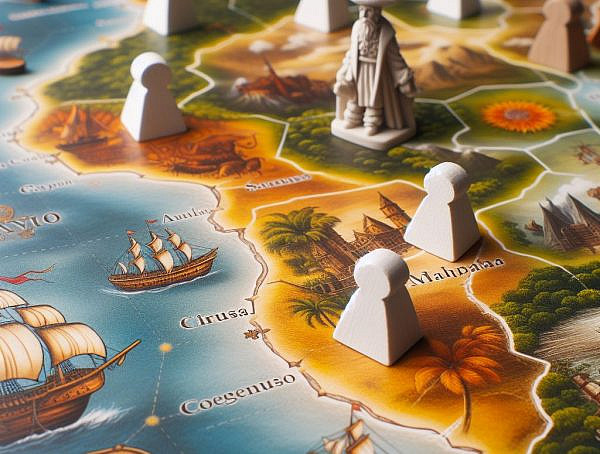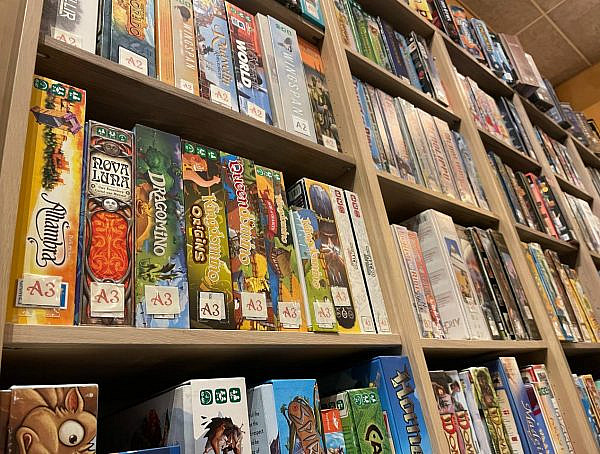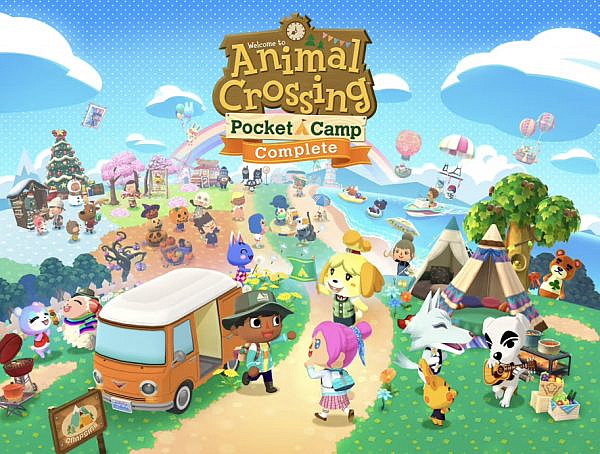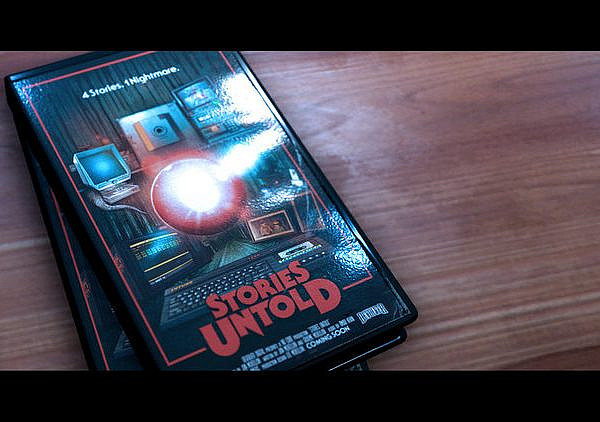What would come to your mind if someone asked you to think about the green color of lemons? Would it be bright? Dark? Vibrant? Do you think your friends would choose the same color as you? This is the entire concept behind Hues and Cues a board game created to spend time with family and friends debating, imagining, and on some occasions laughing.
The concept of the game is quite simple, yet quite entertaining. In each turn the player must draw a card and choose from the four different colors in the card, these colors will be represented by a square on the board and the goal of the game is simple, you give cues to the other players and they try to put their piece in the color that they believe represents the clue more accurately, of course, this happens in an organized way and players who guess first might have the advantage because all the board is free (two players cannot have their pieces in the same color), while others could argue that being last gives you the ability to check what other players decided and have a more accurate choice.
To win the game you need to be the first to reach 50 points, to do this you need to guess the colors as accurately as possible. The game created this special 3×3 square that is used to select who gets the points and how they are distributed:
-
-
-
-
-
-
-
-
-
-
-
- A perfect choice is 3 points which means that your piece is in the center of the square.
- If you can’t get a perfect choice but your piece is still inside the square you earn 2 points.
- You earn 1 point if your piece is outside but next to the square.
-
-
-
-
-
-
-
-
-
-
My experience playing this game gives me mixed feelings, the time spent with my friends was amazing, but I am tempted to say that it was because of my friends and not precisely because of the game. The game itself is entertaining but could be extremely simple and become boring. The possibility to open discussions among your friends to tell them how crazy they are for thinking that the color of dawn is purple or pink or yellow or any color they want for example, is something that makes the game enjoyable. However, some of the cards have a selection of colors that makes the game very difficult to play because despite having 4 colors to choose from, all of them are very similar and give the player who gives the cues a tough time.
Playing to 50 points could become excessive, especially if you are the kind of player who talks a lot during board games. Half of the table hated it, and half loved it, which shows that this game is not for everyone, but it can be enjoyed with friends. A game for a casual afternoon when you don’t have anything else to do, nothing more than that in my opinion, and last but not least, the game is not designed for colorblind people for obvious reasons, even if you are not colorblind and you are looking at the colors with different lights around (lamps, candles, color bulbs) this will impact your vision and will make you make wrong choices.
A game to enjoy but probably a game that I would not play more than 2 times in a year. Innovative? For sure! Repetitive? Definitely!
Designer: Scott Brady
Publisher: Usaopoly
Age recommended: 8+
Pictures source: https://theop.games/products/hues-and-cues
https://www.theboardgamefamily.com
Colombian-born competitive gamer; passionate about eSports, strategy games, and graphic design. A games studies student who enjoys analyzing the aesthetics of video games.
You might also like
More from Game Reviews
Assassin’s Creed Odyssey- The sea breeze carries home and adventure
Let us sail the seas and scale the mountains of Greece together!
Animal Crossing: Pocket Camp but without the microtransactions?
Pocket Camp Complete is a cute and relaxing mobile game that offers the full experience with a one-time purchase.
Stories Untold – An Experimental Psychological Horror Adventure
Stories Untold is a narrative-driven horror adventure game and a truly remarkable take on the genre. The four episode anthology …







